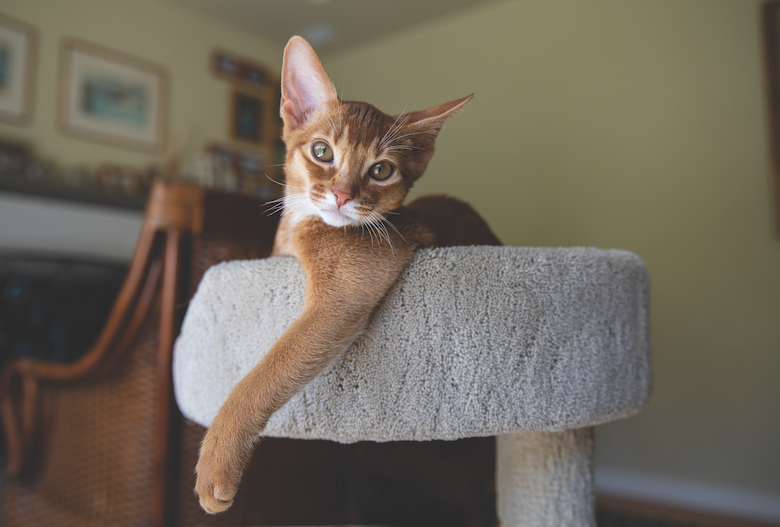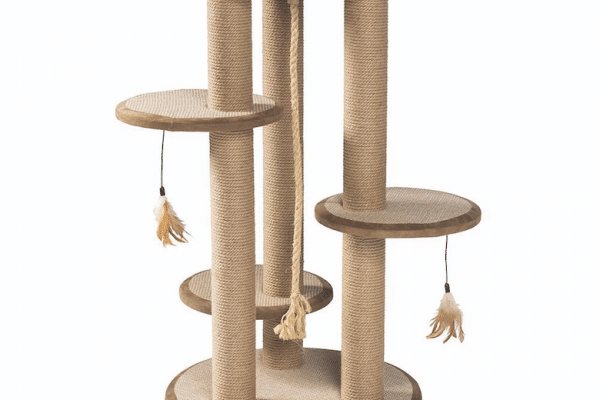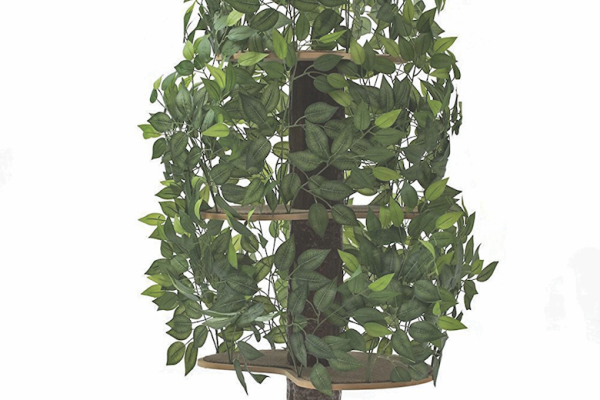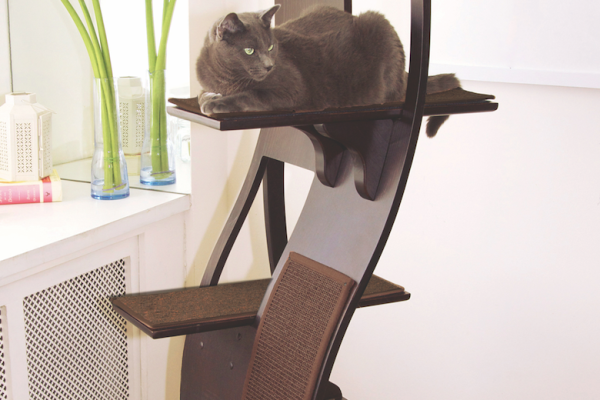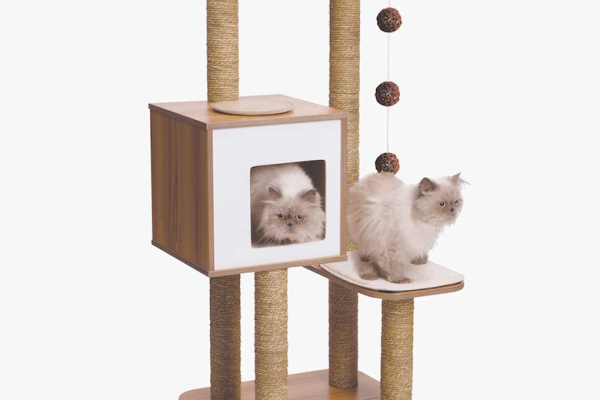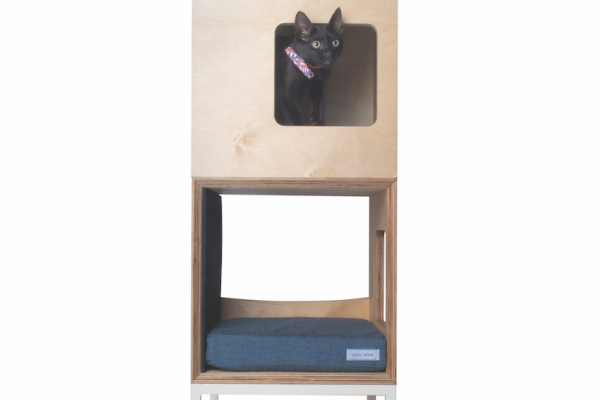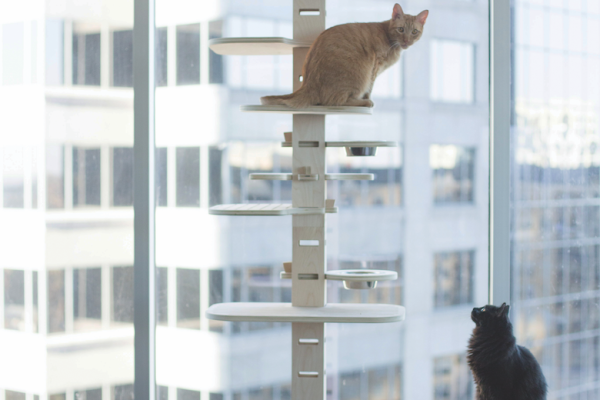When you think of cat furniture, the cat tree comes to mind. This iconic item is a staple in most cat households for good reason. Cat trees satisfy a cat’s natural instincts to climb, scratch and hide. We’ve moved beyond the basic cat tree of yesterday, but now with so many styles, each with different features, how do you choose the right one for your cat?
Climb those “branches”
Cats climb real trees outside in order to get up high so they can survey their territory. They also climb to escape from predators or to stalk their own prey. It follows that indoor cats also need to climb, and cat trees are an easy way to provide just that.
When selecting a cat tree, look for a design with sturdy platforms and easy access from one level to the next. Small steps allow for up-and-down climbing, while larger surfaces give cats a place to lounge — like they are hanging out on the branch of a tree. All horizontal surfaces should have some kind of non-slip material so when it’s time for the zoomies, everyone is safe as they race around.
Most cats will immediately climb a new cat tree, but if your cat is skeptical, introduce her to the new furniture by leading her with a wand toy or placing treats on the various levels, enticing her to climb and claim the prize.
- Kitty Power Paws Multi-Tier Scratching Post prevuepet.com
- Square Luxury Cat Tree on2pets.com
- Lotus Cat Tower therefinedfeline.com
Scratch the “trunk”
Think of big cats in the wild scratching on the trunk of a tree. They do this to claim their territory with a visual mark from their claws and a scent mark from the glands in their paws. They also get a good stretch and groom their claws at the same time. Since cat trees have sturdy vertical surfaces, they can easily have a built-in scratching surface, adding to the overall appeal for your cat, especially if your cat likes to scratch on vertical surfaces. Purchasing a cat tree that has an integrated scratching surface can help save your sofa!
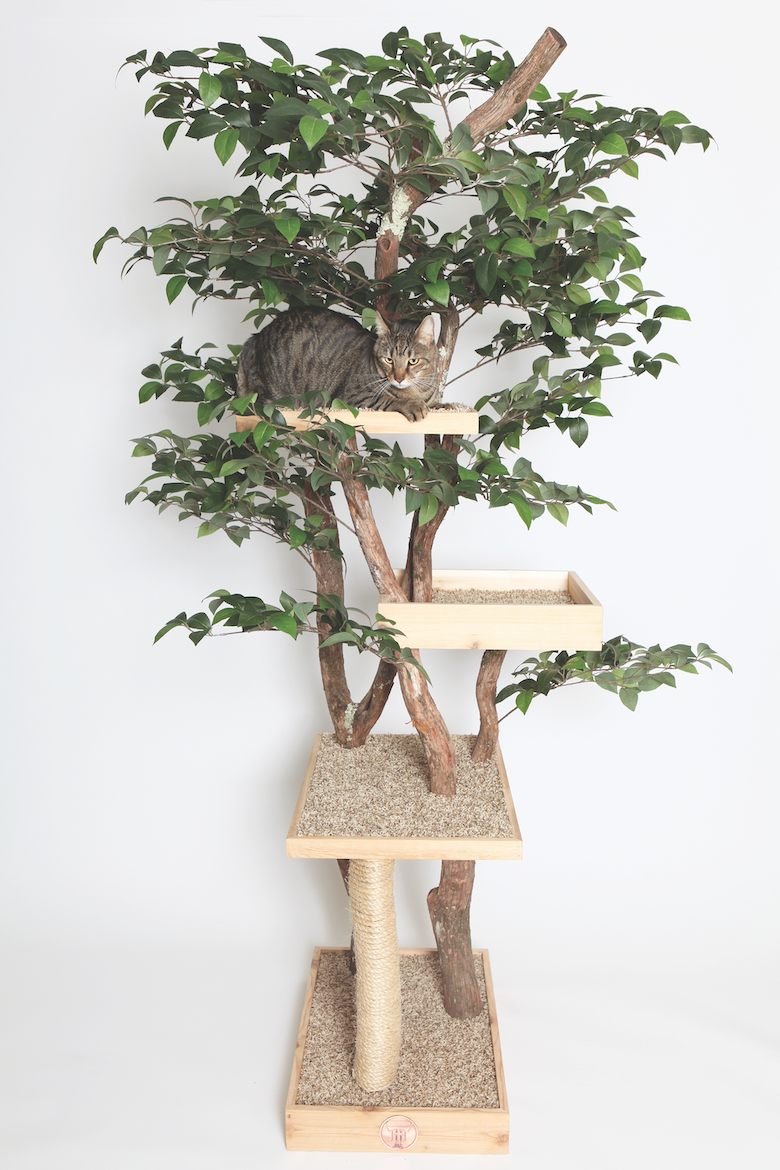
Sycamore pettreehouses.com
Hide in the “leaves”
In the wild, when cats want a little more privacy, they hide in the leaves of a tree so they are not as exposed. Some cat trees also have areas of privacy like “hidey holes” or semi-enclosed “cocoons” integrated into the design. For cats who prefer privacy, look for cat trees that have boxes, hammocks or platforms with raised sides to give your cat more options for alone time. These hideouts can be positioned at the base of the tree or up in the branches, depending on what your cat prefers.
If you have a cat who likes to hang out under blankets, chairs or tables, then you have a cat who would appreciate a cat tree with some hideaway spaces.
-
Vesper High Base
catit.com
-
Mjau Haus
mjauhome.com
- Elevation-II contempocat.com
Stalking “prey”
Lots of cat trees have hanging toys integrated into the design. Toys can entice your cat to use the tree, adding extra entertainment. Young kittens and energetic cats will race around the tree attacking the toys, while lazier cats may bat at a toy as they lounge comfortably. Make sure the toys are easily replaceable, since they will get destroyed.
Location, location, location
Most cat trees are freestanding and can be placed anywhere. Make good use of an empty corner, position them to give your cat easy access to the top of a bookshelf or other surface, or place them in front of a sunny window for the ultimate view.
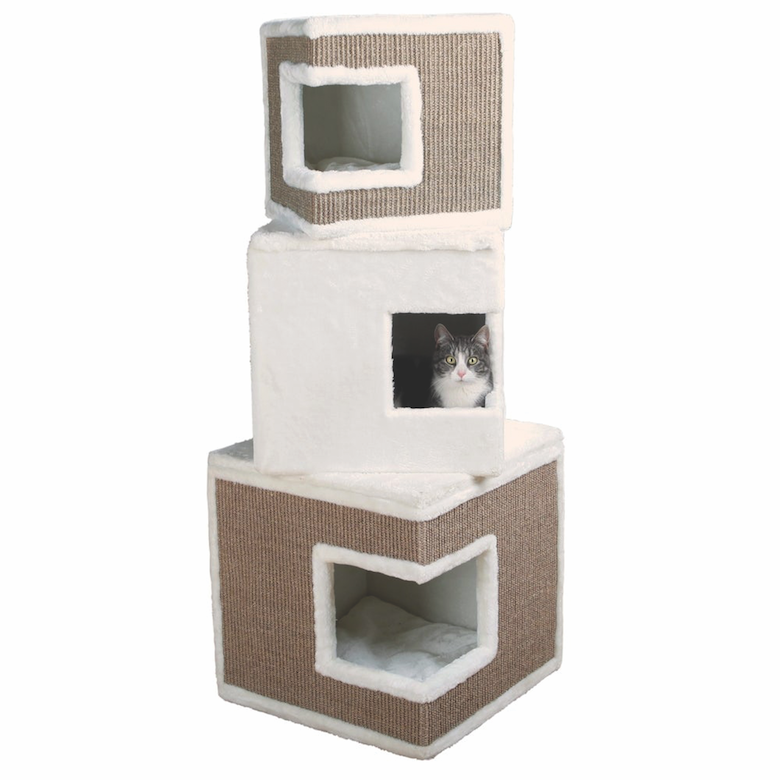
Lilo Cat Tower
trixie.de
Considerations for you
You choose a cat tree primarily for your cat, but you have to live with it, too. Make it easy on yourself, and your eyes, by choosing a design that is functional and that complements your décor. Keep the following in mind:
Is it easy to clean? What material is it made from, and is it easy to wipe down or spot clean?
Are parts replaceable? Can you easily replace any scratching surfaces, non-slip materials, hanging toys or individual pieces once they become worn in order to extend the life of your cat tree?
Is it easy to move? Do you want a large cat tree that will remain in one place or something smaller that you can move around with ease?
What aesthetic are you going for? Some cat trees blend seamlessly with your décor while others stand out as a conversation piece. Which do you want to see in your home?
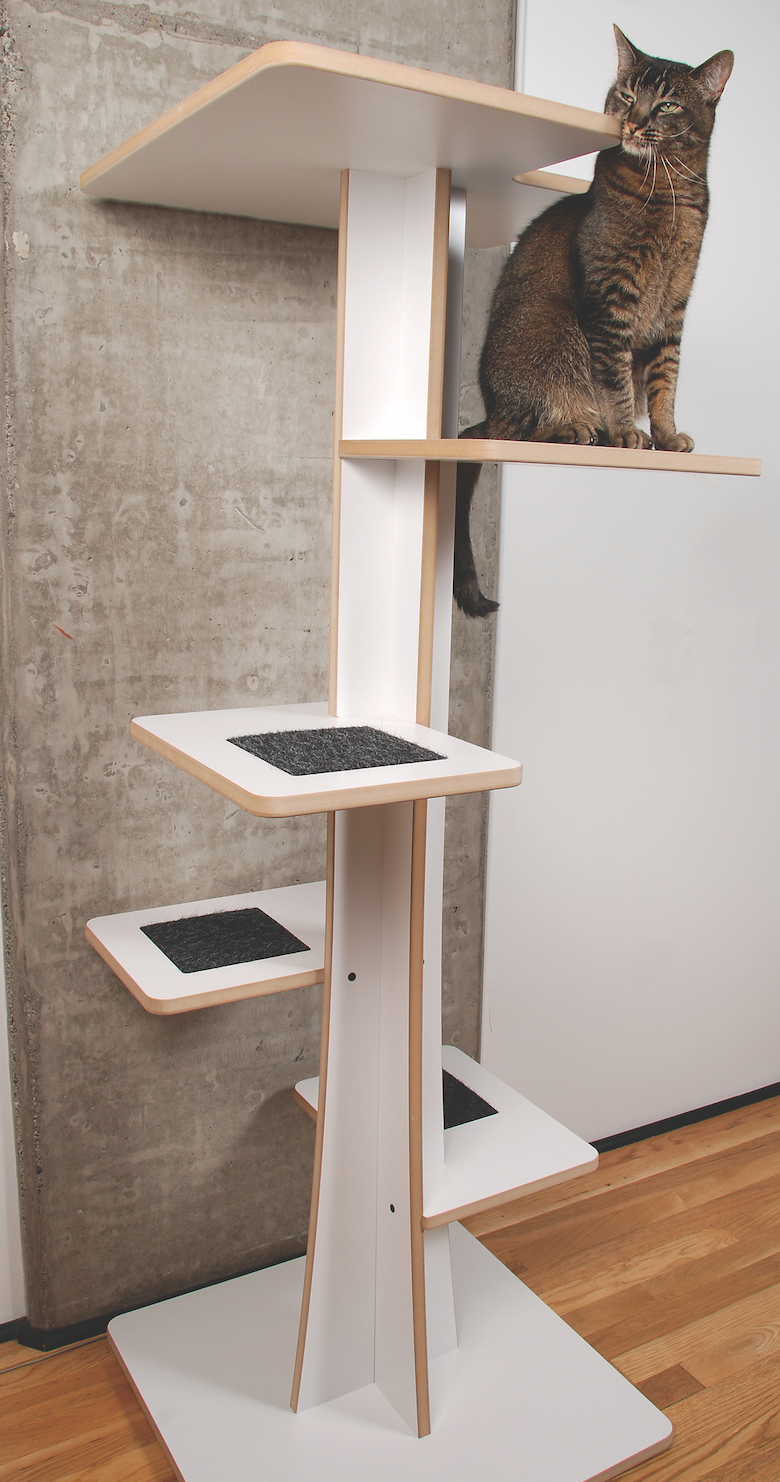
Baobab Cat Tower
squarecathabitat.com
How to choose a cat tree
Small vs. large – Size will depend on how much space you have as well as your budget. Cat trees range from short, single platform perches to elaborate multi-level towers with all the bells and whistles. If you have multiple cats, consider a larger tree that can accommodate two or more cats at a time on different levels. If you have senior cats or cats with mobility issues, stick with a smaller cat tree that has shorter distances between levels.
Open vs. enclosed – Some cat trees have entirely open platforms (the “branches”) and others have enclosed spaces (the “leaves”) or a combination of the two. You can tell if your cat has a preference for one over the other by watching where he likes to spend time. If your cat likes to be spread out on a table or in the middle of the floor, he may prefer a more open cat tree. If he likes to be under tables and chairs or in other small spaces, he may prefer a cat tree with some hideaway spaces.
Carpeted vs. non-carpeted – Traditional cat trees are covered in carpet, which creates a cozy, non-slip surface for cats, but these cat trees can be hard to keep clean and may not be exactly the aesthetic you are looking for. There are lots of alternatives out there made from easy-to-clean materials with a sleek, modern look. Look for cat trees made from painted or stained wood that’s sealed or laminate finishes, both of which are easy to wipe clean. Instead of being completely covered in carpet, these trees often have small carpet or sisal pads attached to the platforms that add a warm, non-slip texture for cats but that are also easy to remove for cleaning and replacement.
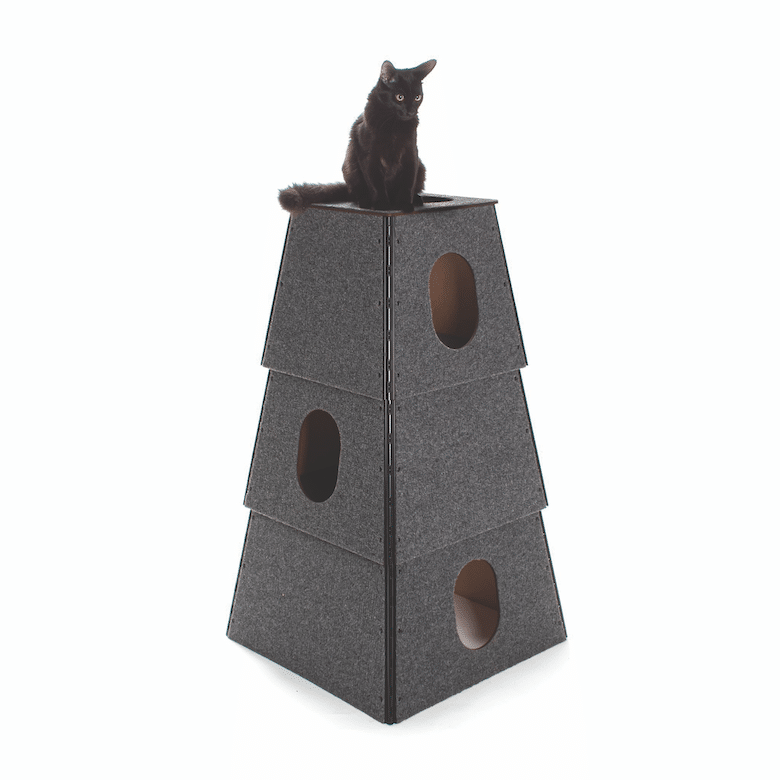
Happystack 3-Story Cat Tower
happystack.net
Go modular!
Consider a modular cat tree design for customization and variety. Choose a system that lets you decide how to configure the different levels, hideaways and scratchers. This way you can customize it to accommodate your cat’s preferences and your space. You can also change things up occasionally to add variety for your cat. Modular cat trees also make it easy to replace worn parts and allow for expansion by adding new pieces.
With all of these options, it can be overwhelming to choose a new cat tree, but no one knows your cat better than you do. Take a little time to observe your cat and make note of where she likes to lounge, climb and scratch, then use this knowledge to inform your decision. You’ll need to balance your preferences with your cat’s in order to find something that you both enjoy.
Top photograph: Mark Rogers Photography
